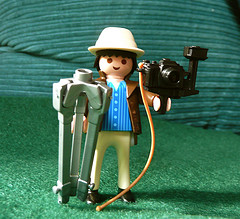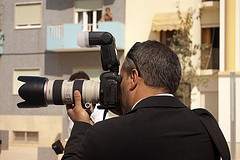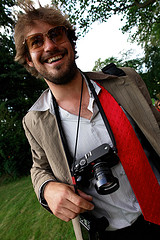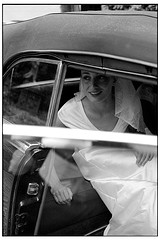Must-Bring Cameras for Wedding Photography
Guest post from Nick Smith, author of Digital Wedding Secrets – a guide solely focused on the wedding photography and its business. If wedding photography is your passion too then Sign Up to its RSS or the FREE Digital wedding newsletter to receive wedding photography tips in your email.
For many, Wedding Photography is the “pays the bills” aspect of photography, and therefore it might get short shrift on the respect meter because of the seemingly lack of “excitement”, but as my friend in the movie business says, “if you take the job, you do the job” and that means no griping. And honestly, there is a compelling aspect to wedding photography, let's take a look, shall we?
The truly interesting thing about Wedding Photography is that it has an editorial aspect to it as well as a photo-journalistic aspect to it (or at least you should position yourself as a photographer who offers a blend of both). This dual nature enables you to provide a premium product… with a premium price.
While it goes without saying bringing two cameras to a wedding is the minimum ideal way to go. However, the true question is what two cameras to bring? I'm going to suggest a dSLR and a Rangefinder.
dSLR
Canon and Nikon make some extraordinary dSLRs and the higher end Prosumer models can easily handle nearly every situation conceivable for wedding photography. Obviously Pentax and Olympus make quality product, too, but Canon and Nikon are the two heavy weights. dSLRs provide you with so much versatility in lens choice and other accessories. But there are few specifications that you might want to consider (either when renting a second or third camera, or buying a second camera, and possibly trading in one of the cameras that you do have) to ensure that you don't miss a shot. The camera's recycle time and burst fps are important factors to weigh, as well as what type of flash units the camera can accommodate (i.e., a High Sync Flash unit). It's important to use a full-frame dSLR, this is pure an aesthetic bias on my part, but you want to be able to use as many lenses as are available in your camera manufacturer of choice's line. Sure you could miss out of the fully computer-controlled lenses, but you might have a favorite lens that was for a film camera.
Most people will do well with two dSLRs, one fitted with a wide angle zoom (perhaps a 17mm-35mm), and the other with a telephoto zoom (probably a 85mm-200mm). This combination will enable you to quickly jump back-n-forth for group shots and tighter more intimate shots… without having to swap lenses, and perhaps miss a crucial shot.
A Rangefinder
Why a rangefinder?, you ask. Simple, these most innocuous of cameras allow you to get extraordinarily candid and intimate shots that you might not otherwise be able to get with a dSLR. The level of intrusion that an dSLR causes can ruin the spontaneity of precious moments; not to mention that some people act a fool when they see a camera in active position.
Now I wouldn't say that these cameras really fallen out of favor, more like they have become the ultimate niche photographic item. And the granddaddy of them is the Leica M7 or its digital cousin the M9 (Leica's newest, most state-of-the-art digital camera). The unparalleled image quality that these cameras provide are worth taking the time to learn the unorthodox focusing method.
Leica's new M9 is an AWESOME digital camera with a full-frame (24mm x 36mm) image sensor and captures images in a high-density RAW format. And because of the full-frame image sensor,you can effectively use any of the Leica lenses from the past 30 years… and those are perhaps the lenses on the planet. Known for their sharpness, incredibly speed, and lack of chromatic aberration, you'll be awe-struck at the quality of the photos.
I had mentioned earlier the photo-journalistic aspect of Wedding Photography, well with a Leica (or any rangefinder for that matter) you can take on the role of photo-essayist. Rangefinders, and the Leica in particular, have supremely quiet shutter releases, so hardly anyone will know that you've actually taken the photo. Plus you can focus and fire from the hip so easily that you'll have an unprecedented ability to grab photos with practically no one noticing. This gives you a lot of creative power as a photography, because you can concentrate on getting the Wedding Party and the guests to behave as naturally as possible.
You might think the Leica is overkill (due to its price), but the images will be well-worth it (and if you rent it, the actual expense is minimal).
So the camera configuration of two dSLRs and a rangefinder can yield you a wider variety of more compelling photographs with different feelings and emotions captured. That's what the clients ultimately want, images that define the moment, that will spark memories in the future and will stand-out from the standard wedding photography fare (not that you won't offer those as well, but it's always about offering more than the standard these days).
About The Author: Nick Smith is author of Digital Wedding Secrets – a guide solely focused on the wedding photography and its business. If wedding photography is your passion too then Sign Up to its RSS or the FREE Digital wedding newsletter to receive wedding photography tips in your email.



